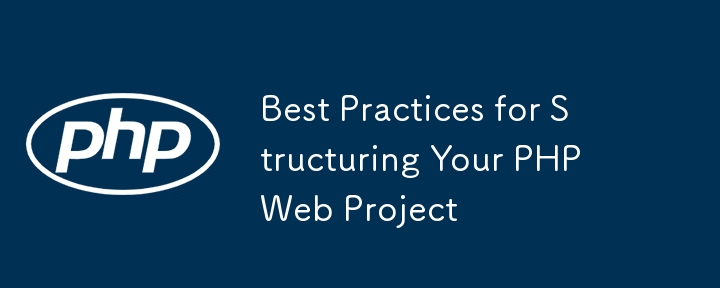
When planning a new PHP web project, it’s important to consider both the technical and strategic aspects to ensure success. Here are some rules to guide you through the process:
1. Define Clear Objectives and Requirements
-
Why it matters: A clear understanding of the project’s goals helps to avoid scope creep and sets expectations with stakeholders.
-
Actions:
- Create a project outline with specific functionalities.
- Identify the core features and potential phases of development.
- Gather requirements from all stakeholders.
2. Choose the Right PHP Framework or Approach
-
Why it matters: The choice of framework or plain PHP affects the project’s scalability, security, and ease of maintenance.
-
Actions:
- For larger projects, consider using PHP frameworks like Laravel, Symfony, or CodeIgniter for built-in features and MVC architecture.
- For smaller, lightweight projects, you might opt for raw PHP if frameworks are overkill.
- Ensure your PHP version is at least PHP 7.4 or higher for performance benefits.
3. Design Database Structure Thoughtfully
-
Why it matters: The database schema must align with project goals for efficient data management.
-
Actions:
- Use MySQL or PostgreSQL based on the complexity of the project.
- Normalize your database to avoid redundancy, or denormalize for read-heavy applications.
- Create an ERD (Entity-Relationship Diagram) to map out relationships between data entities.
4. Plan for Security from the Start
-
Why it matters: Security vulnerabilities can be exploited if not addressed early, leading to data breaches and legal implications.
-
Actions:
- Use prepared statements to prevent SQL injection.
- Implement input validation and output escaping.
- Use HTTPS and handle passwords securely (e.g., via password_hash()).
- Plan for role-based access control (RBAC) if your project has multiple user roles.
5. Develop a Modular, Scalable Architecture
-
Why it matters: As the project grows, a well-architected system allows for easier updates, maintenance, and new feature additions.
-
Actions:
- Follow the DRY (Don't Repeat Yourself) principle to avoid redundant code.
- Break the project into modules or components for reusability and easier scaling.
- Use a clear directory structure to organize your project (e.g., separating controllers, models, and views).
6. Optimize for Performance Early On
-
Why it matters: Poor performance can drive users away and strain your server resources.
-
Actions:
- Use caching mechanisms (e.g., Memcached, Redis).
- Optimize SQL queries and consider using indexing for large datasets.
- Minify and combine CSS, JS, and optimize image sizes for faster loading times.
- Consider using CDNs (Content Delivery Networks) for static assets.
7. Implement Version Control and Automated Deployment
-
Why it matters: Version control allows for collaboration, bug tracking, and rollback in case of issues, while automated deployment speeds up the release process.
-
Actions:
- Use Git for version control and maintain a clean branching strategy (e.g., master, develop, feature branches).
- Set up CI/CD pipelines (using tools like Jenkins, GitLab CI, or GitHub Actions) for automated testing and deployment.
- Ensure the project can be easily set up in different environments (development, staging, production) using environment variables.
By following these some rules, you will create a solid foundation for your PHP web project that is secure, scalable, and maintainable while aligning with your objectives.
The above is the detailed content of Best Practices for Structuring Your PHP Web Project. For more information, please follow other related articles on the PHP Chinese website!






